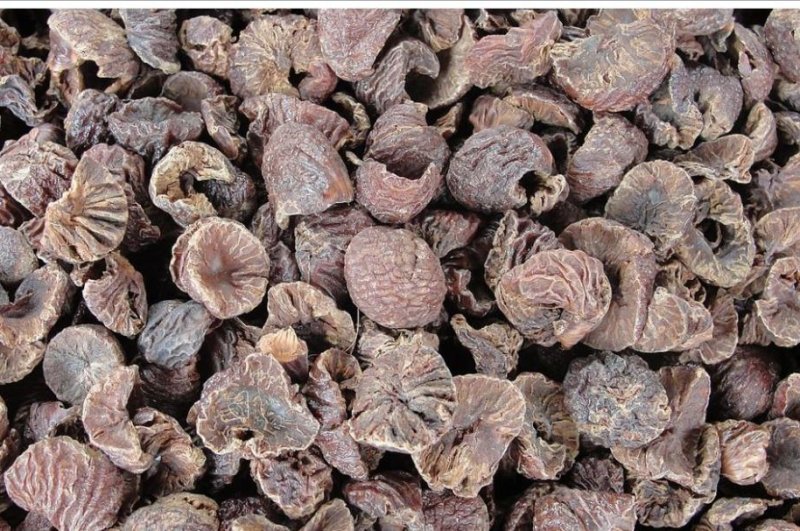By combining nicotine gum with an existing medication used to treat dry mouth, two researchers found it curbs the addition to the mixture of areca nut (pictured), spices, slaked lime and, sometimes, tobacco. Photo by
Thamizhpparithi Maari/Wikimedia Commons
July 19 (UPI) -- Researchers are developing a way for users to kick an addiction to betel quid -- a cheap stimulant that can lead to oral disease and cancer.
By combining nicotine gum with an existing medication used to treat dry mouth, two University of Florida Health researchers found it curbs the addition to the mixture of the areca nut, spices, slaked lime and, sometimes, tobacco.
Betel nut is considered the world's fourth most-used stimulant after caffeine, alcohol and tobacco.
"This deals with the nicotine dependence but also gives them the chewing experience they crave without consuming the caustic lime that is found in betel quid," Dr. Roger Papke, a UF College of Medicine pharmacology professor, said in a press release.
Papke sees the nicotine and pilocarpine gum as a way to break the addiction to betel quid. It is grown and used throughout much of Southeast Asia. As a cultural tradition, in small doses, it creates a sense of euphoria and alertness. But prolonged use can create addiction and lead to oral cancer.
"The idea is to use nicotine replacement therapies the same way they do for smokers," he said. "The obvious choice is to use a gum because betel nut users are already used to chewing something."
He said the nicotine gum works because the areca nut's active ingredient, arecoline, works the same receptor proteins in the brain as nicotine.
But users crave the quid's other effects, including the intense salivation caused by the lime, in the multisensory experience, Papke said.
He came up with the idea of employing the drug, pilocarpine, which is used to improve salivary function in people with dry mouth.
Papke and a Singapore-based company are seeking grants and in-kind support to bring the gum, known as Quid X, to the estimated 22 million betel quid users in Myanmar and hundreds of millions of others in India and southeast Asia.
Dr. Indraneel Bhattacharyya, an oral pathology researcher in the UF College of Dentistry, is collaborating with Papke on the application, including developing surveys for U.S. cities with large populations of people from India and South Asia to gauge interest in the product.
"It's culturally embedded in a large part of the world, but I also understand its biology," he said.
In the United States, the drug has already been approved for other uses and a U.S. patent application is pending.
The product builds on Papke's 2015 findings, which showed nicotine dependence and betel nut addiction are linked to the same site of action in the brain.
In 2017, Papke and other researchers identified compounds derived from the areca nut that could help smokers and betel quid users break their addictions. They started testing different compounds.
"We can see that there are common anti-addiction needs with betel quid users and smokers," Papke said at the time. "We're hoping to take what we have learned from betel quid research and create a drug that will help both groups."















